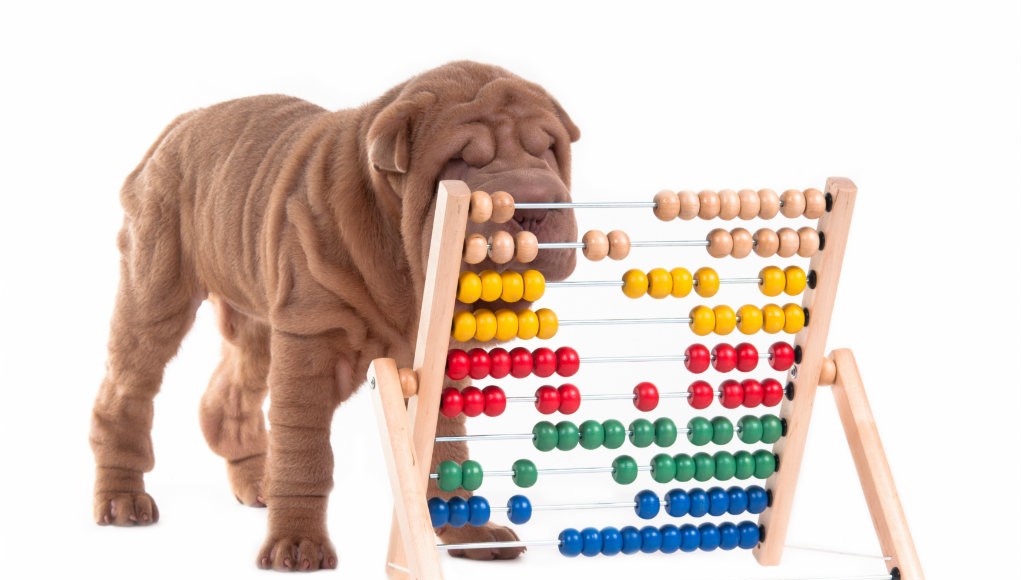 Each week I read through blog posts and articles about a particular subject. Last week I decided to share some great info with you on the topic of common canine allergies. It's a common issue that many dog owners struggle with. Understanding the importance of cognitively challenging your dog is equally vital, but I don't think a lot of pet parents realize how imperative it is to their dog's overall health and well-being.
Each week I read through blog posts and articles about a particular subject. Last week I decided to share some great info with you on the topic of common canine allergies. It's a common issue that many dog owners struggle with. Understanding the importance of cognitively challenging your dog is equally vital, but I don't think a lot of pet parents realize how imperative it is to their dog's overall health and well-being.
Making sure your pet gets enough physical exercise is important, but you also need to be sure that you're giving him some mental exercise too. Dogs are like us – they crave mental stimulation, and without it they get bored. Bored dogs will do one of two things: (1) find something to stimulate themselves mentally, which usually leads to trouble or (2) lie around waiting for someone to entertain them, causing them to become lazy and gain weight.
The Importance of Cognitively Challenging Your Dog
Did you know that mental stimulation will tire out your pet faster than any physical exercise? Many pet owners become frustrated with overly active dogs that seem to have endless energy. Nick White, owner of Off Leash K9 Training, writes a blog for his website, and in this post he explains:
- Again, comparing dogs to people, what tires you more, walking one or two miles or doing complex math problems for one to two hours straight? With the math problems, your head hurts, you feel drained, you just want to put down the books and shut your eyes. That’s how mental stimulation works with dogs, as well. Constant thinking creates a lot of mental stimulation, which tires the entire body.
Tiring out an active dog is a great bonus, but the real benefit of understanding the importance of cognitively challenging your dog is that you can actually make him more intelligent. In an article for Psychology, Stanley Corren, professor of psychology at the University of British Columbia, writes:
- It may be hard to believe, but you can actually change the physiology of your dog's brain. You can make it larger and more efficient simply by providing certain experiences for your pet. The same process will make your dog more intelligent and give his personality an added degree of stress resistance.
If that's not a good enough reason, I don't know what is. By putting in a little effort to provide your dog with mental stimulation, you could add to his overall health and well-being. There are so many ways to mentally stimulate your pet, but the best is through training. While engaged in a training session, your dog is learning and absorbing all the things you're teaching him.
Of course, there are products on the market that can help mentally stimulate your pet too. You can buy interactive dog toys and puzzle games made especially for canines. You don't have to spend money though. There are lots of things that you can do in and around your home to mentally stimulate your pet. Keep it simple, and don't over think it.
This article on the yourdog.co.uk website puts it perfectly when the writer gives tips like these to pet parents:
- Keep it natural — it’s about your dog expressing his natural abilities.
- Let your dog explore — don’t set time limits. Take cues from your dog as to whether he’s had enough.
Not every dog is the same, and they are all on different mental levels. You need to take your dog's age, skill level and health into consideration when exercising him mentally or physically. Puppies may not have the attention span to participate in a 1-hour training session. Likewise, older dogs may not have the energy to hunt down treats that you've hidden around the house.
Emma Tucker has written a blog post for sitdropstay.com, and she explains perfectly how to cater your dog's mental stimulation sessions to his individual needs.
- Most of these activities will suit all dogs, but feel free to add and modify things to suit your dog’s own breed or skill set and natural instincts. For example a border collie or kelpie will particularly enjoy chasing and focusing intensely on a specific target and will need high amounts of mental challenge, a terrier will enjoy short bursts of high physical intensity such as finding an object, tug of war and shaking…Variety is the key, break it up and experiment to find out what fulfils your dog!
Perhaps the best (and cheapest) way to cognitively challenge your dog is simply through play. Your dog will enjoy playing with you or another dog. Mixing it up by setting up a play date for your pet sometimes would be very beneficial. Maybe you have a friend or family member with a dog that could also use a friend or you may be able to make plans with another pet parent at your local dog park.
Linda J. Brodzik is a dog trainer and behavior specialist, and she has written this fantastic article about the power of play for dogs. She explains the many benefits of play for canines and different ways you can engage your pet.
- Play expends energy and dogs are natural explorers. They are curious and intelligent problem-solvers. They seek stimulation and puzzles to investigate and conquer. They not only enjoy playing but need to do so. Dogs need continual and diverse opportunities to exercise both their bodies and minds.
Just like us, dogs tend to slow down a little bit as they age. Oftentimes we chalk up any behavioral or mental changes to just getting older, but what if that isn't the case? What if there was a physical reason that our dogs were experience these changes? One that, if we caught it in time, could be slowed down?
There actually is! It's known as a disorder called Canine Cognitive Dysfunction (CCD), and new research being done is going to help pet parents increase their senior dogs' quality of life by trying to slow down the progression of the disease. Although there is nothing we can do to prevent the onset of CCD, this article on goodpetparent.com gives dog owners some tips to slow the progression of the disease.
- However, researchers believe you can slow the onset of CCD by practicing the following:
- Keep your dog active with regular physical exercise appropriate for his age and medical condition.
- Provide lots of interactive toys, like puzzle feeders, bubble machines, tug toys, and treat dispensing toys.
- Allow your dog to interact and play (safely) with other dogs and with people.
- Continuously teach your dog new tricks, especially those that are more complicated and require more than one step in a sequence.
What causes CCD? Karen L. Overall wrote an extensive article on dvm360 about the possible causes and the statistics of how many dogs are effected with the disease. She gives a lot of great information for pet parents that may be concerned that their dog is developing CCD. If you have any questions, this is a great article to check out.
- Estimates from numerous studies suggest that at least 25 percent of dogs older than 10 show one of these signs associated with brain aging, and that by 15 years, more than 60 percent of dogs are affected to some extent.
While browsing the site, I also stumbled across this article written by Mrs. Overall too. In this one she goes into more detail about the prevention and treatment of CCD. I'm sure you'll be surprised to find out that understanding the importance of cognitively challenging your dog is a great way to help combat this disease.
- In addition to some scent work, other forms of cognitive stimulation may include basic obedience or clicker work, or working to teach new or maintain old tricks. Five minutes of such work three to four times a day can be priceless.
Do not underestimate the mental abilities of your dog. Chances are, if your dog doesn't seem mentally advanced, it's because you haven't taken the time to challenge him cognitively. Just like humans, dogs cannot learn without someone to teach them. If you leave your pet unattended during the day and he spends most of his time lazing on the couch, who's fault is that – yours or his?













